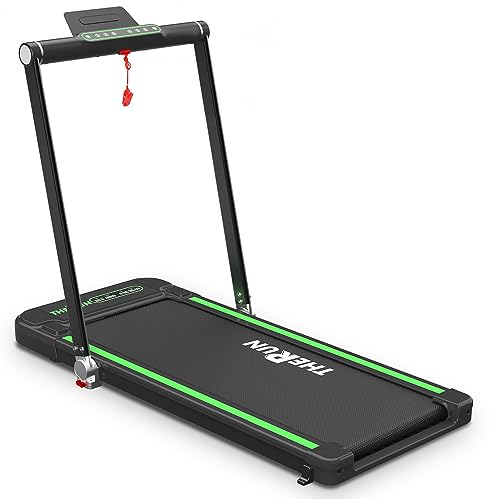10 Methods To Build Your Gym Treadmill Empire
페이지 정보
작성자 RO 작성일25-08-07 01:26 (수정:25-08-07 01:26)관련링크
본문
Treadmills: A Comprehensive Guide to Understanding Their Functionality, Benefits, and Appropriate Selection
Introduction
Treadmills have actually become a staple in modern fitness routines, both in homes and fitness centers worldwide. They provide a hassle-free and efficient way to preserve cardiovascular health, increase endurance, and assist in weight management. This article explores the various kinds of treadmills, their benefits, features to think about when acquiring, and some FAQs to assist users in making informed decisions.

Types of Treadmills
When it concerns selecting a treadmill, it is important to understand the various types readily available in the market. Here are the primary categories:
1. Handbook Treadmills
- Mechanism: These treadmills have an easy design and count on the user's efforts to move the belt.
- Pros: More budget friendly, quieter operation, no electrical power required.
- Cons: Limited features, may not supply the exact same variety of exercise strength.
2. Motorized Treadmills
- Mechanism: Powered by a motor that drives the belt, allowing users to walk or perform at a set speed.
- Pros: Greater range of speeds and inclines, equipped with various features such as heart rate displays and workout programs.
- Cons: More pricey and may need more upkeep.
3. Folding Treadmills
- System: Designed for those with minimal area, these treadmills can be folded for easy storage.
- Pros: Space-saving, frequently motorized, flexible functions.
- Cons: May be less durable than non-folding models.
4. Industrial Treadmills
- System: High-quality machines created for use in health clubs and gym.
- Pros: Built to stand up to heavy use, advanced features, typically include service warranties.
- Cons: Pricey and not ideal for home use due to size.
5. Curved Treadmills
- Mechanism: A distinct design that enables users to move the belt using their own energy.
- Pros: Offers a more natural running experience, promotes much better running form.
- Cons: More costly and can be noisier.
| Treadmill Type | Pros | Cons |
|---|---|---|
| Manual | Budget friendly, no electricity required | Limited features |
| Motorized | Variety of speeds, advanced functions | Maintenance required |
| Folding | Space-saving, often motorized | May do not have sturdiness |
| Business | Constructed to last, professional-grade features | Pricey |
| Curved | Natural running experience, promotes good form | Greater price |
Benefits of Using Treadmills
Treadmills provide numerous advantages that can contribute to one's general health and physical fitness objectives. A few of these advantages include:
- Convenient Workouts: Treadmills permit users to exercise inside despite climate condition.
- Cardiovascular Health: Regular use can enhance heart health by increasing stamina and promoting healthy blood circulation.
- Weight Management: Effective for burning calories, which helps in weight loss and management.
- Personalized Workouts: Users can control speed, slope, and period to create tailored workout experiences.
- Security: Treadmills supply a foreseeable surface, minimizing the threat of falls compared to outdoor running.
- Multifunctional: Many treadmills featured functions like heart rate screens, exercise programs, and even entertainment systems.
Selecting the Right Treadmill
When selecting a treadmill, prospective purchasers should think about numerous crucial elements:
Features to Consider:
- Motor Power: Typically determined in horse power (HP), a motor strength of at least 2.5 HP is recommended for serious runners.
- Belt Size: A longer and larger belt accommodates numerous stride lengths, providing convenience during workouts.
- Incline Settings: Adjustable slope features mimic outside hill running and can increase workout intensity.
- Weight Capacity: Ensure the treadmill can support the user's weight for security and longevity.
- Console Features: Look for user-friendly control panels, workout programs, and Bluetooth compatibility for streaming music or other functions.
Spending plan Considerations
- Under ₤ 500: Entry-level manual treadmills ideal for casual walkers.
- ₤ 500 - ₤ 1,500: Mid-range motorized treadmills that use more functions and better sturdiness.
- ₤ 1,500 - ₤ 3,000: High-end designs with advanced technology, bigger motors, and longer guarantees.
- Over ₤ 3,000: Commercial-grade treadmills ideal for regular use in fitness centers or training centers.
Often Asked Questions (FAQs)
1. How frequently should I use a treadmill?
It is suggested to utilize a treadmill a minimum of three to 5 times a week, incorporating various intensity levels for best outcomes.
2. Can I slim down by utilizing a treadmill?
Yes, consistent usage of a treadmill can add to weight-loss, especially when combined with a balanced diet plan and strength training.
3. What is the very best speed to walk on a treadmill for beginners?
A speed of 3 to 4 miles per hour is an ideal variety for newbies. It's necessary to start sluggish and slowly increase speed as comfort and endurance improve.
4. Do I require to use a treadmill if I already run outdoors?
Utilizing a Treadmill home can provide extra advantages, such as regulated environments and varied workouts (slope, periods) that are not always possible outdoors.
5. How do I preserve my treadmill?
Routine upkeep includes lubricating the belt, cleaning the deck and console, and checking the motor for optimum efficiency.
Treadmills are vital tools for those wanting to enhance their physical fitness levels in a regulated and convenient way. With different types offered, understanding their functions and advantages is important for making an informed purchase. By thinking about personal workout needs, area accessibility, and spending plan constraints, individuals can find the most appropriate treadmill that fits their way of life. Incorporating treadmill workouts into a balanced fitness routine can cause improved health outcomes and a pleasurable exercise experience.

댓글목록
등록된 댓글이 없습니다.

